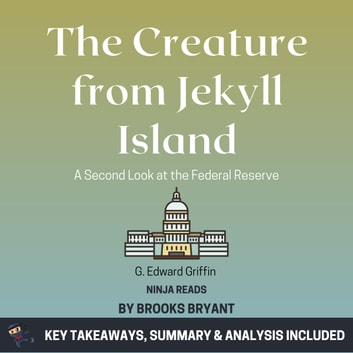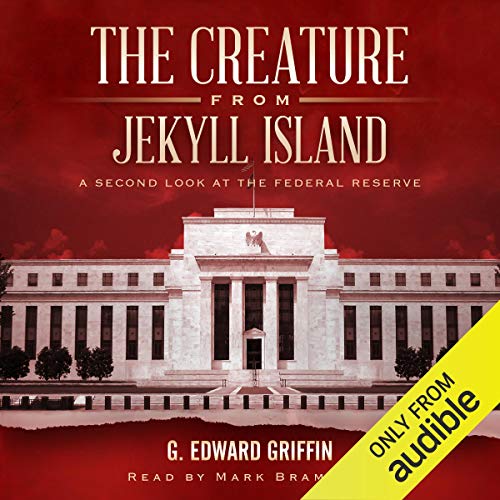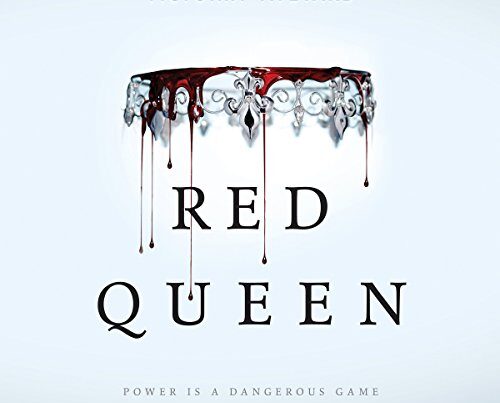G. Edward Griffin’s “The Creature from Jekyll Island” audiobook delves into the history and impact of the Federal Reserve. It reveals hidden truths about banking and economic control.
G. Edward Griffin’s “The Creature from Jekyll Island” offers a deep dive into the origins and operations of the Federal Reserve System. This audiobook explains how a secretive meeting on Jekyll Island in 1910 led to the creation of the Federal Reserve.
Griffin discusses the implications of this institution on the economy and personal freedoms. The book also explores the connections between banking elites and global financial stability. By uncovering the hidden mechanisms of economic control, Griffin aims to educate listeners on the power dynamics at play. This audiobook is essential for anyone interested in understanding the complexities of modern banking and finance.
Introduction To ‘the Creature From Jekyll Island’
‘The Creature from Jekyll Island’ is an eye-opening book by G. Edward Griffin. This book delves into the history and impact of the Federal Reserve System. It uncovers secrets about banking and money creation. The audiobook version makes this complex topic accessible and engaging.
G. Edward Griffin’s Journey
G. Edward Griffin is a researcher and author. His journey to uncover the truth about the Federal Reserve began with curiosity. He wanted to understand how money works and why it’s so powerful. Griffin’s extensive research led him to shocking revelations.
He discovered that the Federal Reserve was created in secrecy. This happened on Jekyll Island in 1910. A group of powerful bankers and politicians met there. They crafted a plan that would change the financial world forever. Griffin’s journey was filled with challenges and discoveries.
Audiobook Impact
The audiobook version of ‘The Creature from Jekyll Island’ has a significant impact. It brings the complex subject of the Federal Reserve to a broader audience. Listeners can absorb the content while commuting or doing chores. This accessibility makes the audiobook popular.
The narration is engaging and clear. It keeps listeners interested and informed. The audiobook breaks down complex topics into simple terms. This helps listeners understand the importance of the Federal Reserve. The audiobook also includes additional resources and references.
| Aspect | Details |
|---|---|
| Author | G. Edward Griffin |
| Book Title | ‘The Creature from Jekyll Island’ |
| Topic | Federal Reserve System |
| Format | Audiobook |

The Birth Of The Federal Reserve
The audiobook “The Creature from Jekyll Island” by G. Edward Griffin dives deep into the origins of the Federal Reserve. Understanding this birth is crucial to grasp the workings of the modern financial system. Griffin unveils the hidden events that led to the establishment of one of the most powerful financial institutions in the world.
The Secretive Meeting At Jekyll Island
The birth of the Federal Reserve traces back to a secret meeting at Jekyll Island in 1910. A group of elite bankers and politicians gathered here to discuss the creation of a central banking system. They wanted to keep their meeting confidential. The participants used code names to protect their identities. They sought to reform the banking system and stabilize the economy.
Jekyll Island provided the perfect secluded location for these discussions. The group believed secrecy was vital for their plan. They feared public backlash and opposition. Their ultimate goal was to draft a proposal for a central bank. This proposal would later evolve into the Federal Reserve Act.
Founding Fathers Of The Federal Reserve
The meeting included some of the most powerful figures in finance and politics. These individuals are often referred to as the founding fathers of the Federal Reserve. Notable attendees included:
- Senator Nelson Aldrich
- Assistant Secretary of the Treasury A.P. Andrews
- Paul Warburg, representing Kuhn, Loeb & Co.
- Frank Vanderlip, President of the National City Bank of New York
- Henry P. Davison, partner at J.P. Morgan & Co.
- Benjamin Strong, future head of the Federal Reserve Bank of New York
These men crafted the framework for the Federal Reserve. Their combined influence and expertise were instrumental in shaping the central bank. They aimed to address the banking industry’s problems and prevent future financial panics.
Their efforts culminated in the Federal Reserve Act of 1913. This act officially established the Federal Reserve System. The Federal Reserve has since played a pivotal role in the U.S. economy. Its creation marked a significant transformation in American financial history.
Key Concepts Explained
In ‘The Creature from Jekyll Island’ audiobook, G. Edward Griffin explores the intricacies of the banking system. This section delves into key concepts that Griffin explains, offering insights into the world of money and banking.
Fiat Money And Its Implications
Fiat money is currency without intrinsic value. It is established as money by government regulation. Unlike gold or silver, fiat money has no physical backing.
Fiat money relies on trust and government decree. This means people accept it as payment because they trust the government. Inflation can occur because fiat money can be printed in unlimited quantities.
The implications of fiat money are vast. It impacts savings, investments, and economic stability. Too much printing can lead to hyperinflation. This reduces the currency’s value drastically.
Central Banking System Mechanics
The central banking system controls a nation’s money supply. It regulates banks and ensures economic stability. The central bank can influence interest rates and inflation.
Central banks use various tools to manage the economy. These include open market operations, reserve requirements, and the discount rate. Open market operations involve buying and selling government securities.
Reserve requirements determine the amount of money banks must hold in reserve. The discount rate is the interest rate charged to commercial banks for loans from the central bank.
The central bank’s actions impact the economy and financial markets. They aim to maintain price stability and low unemployment. Understanding these mechanics helps to grasp how economies function.
| Concept | Description |
|---|---|
| Fiat Money | Currency without intrinsic value, backed by government trust. |
| Central Banking | System controlling money supply and economic stability. |
- Fiat money impacts inflation and economic stability.
- Central banks use tools to manage the economy.
- Understanding these concepts is crucial for economic literacy.

The Role Of The Federal Reserve
In G. Edward Griffin’s audiobook, The Creature from Jekyll Island, the Federal Reserve’s role is pivotal. The Federal Reserve controls the economy in many ways. Its actions influence inflation, deflation, and interest rates. Understanding these roles helps grasp the larger economic picture.
Controlling Inflation And Deflation
The Federal Reserve manages inflation and deflation. It uses monetary policies to achieve stability.
Inflation happens when prices rise. The value of money decreases. The Federal Reserve can increase interest rates to control this. Higher interest rates discourage borrowing. This reduces the money supply.
Deflation happens when prices drop. The value of money increases. The Federal Reserve can decrease interest rates to combat this. Lower interest rates encourage borrowing. This increases the money supply.
Here’s a simple table summarizing these points:
| Economic Condition | Federal Reserve Action | Effect |
|---|---|---|
| Inflation | Increase Interest Rates | Reduce Money Supply |
| Deflation | Decrease Interest Rates | Increase Money Supply |
Interest Rates And Their Economic Impact
Interest rates are a key tool for the Federal Reserve. They affect borrowing and spending.
When the Federal Reserve raises interest rates, borrowing becomes expensive. People and businesses borrow less. This slows down economic activity.
When the Federal Reserve lowers interest rates, borrowing becomes cheaper. People and businesses borrow more. This boosts economic activity.
Here are some key impacts:
- High interest rates can reduce inflation.
- Low interest rates can stimulate economic growth.
- Interest rates influence investment decisions.
- They affect the housing market and consumer spending.
Understanding these roles of the Federal Reserve helps in making informed economic decisions.
Critiques And Controversies
The audiobook “The Creature from Jekyll Island” by G. Edward Griffin delves into the complexities of the Federal Reserve. This section explores the critiques and controversies surrounding central banking and the Fed’s global influence.
Arguments Against Central Banking
Critics argue that central banking gives too much power to a few individuals. They say it leads to economic manipulation and lack of transparency. Many believe central banks can create economic instability.
- Loss of financial autonomy: Central banks can control the money supply.
- Inflation control: Critics claim they often fail at managing inflation.
- Economic cycles: Some say central banks cause boom and bust cycles.
The audiobook suggests that central banks benefit the elite. It argues that ordinary people often suffer due to central banking policies.
The Fed’s Influence On Global Economics
The Federal Reserve, or the Fed, has a significant impact on global economics. Many countries watch the Fed’s actions closely. Its decisions on interest rates can affect global markets.
| Aspect | Influence |
|---|---|
| Interest Rates | Changes can impact global borrowing costs. |
| Monetary Policy | Fed’s policies can influence global trade and investment. |
| Currency Value | Fed actions can affect the U.S. dollar’s strength. |
The audiobook highlights how the Fed’s decisions ripple through global economies. This influence can lead to economic challenges in various countries.
Historical Events Influenced By The Fed
The audiobook The Creature from Jekyll Island by G. Edward Griffin delves into the history of the Federal Reserve. This enlightening listen reveals how the Fed has influenced major historical events. Understanding these events provides insight into the Fed’s power and impact.
The Great Depression
The Great Depression remains one of the most significant economic crises. It began in 1929 and lasted a decade. The Federal Reserve played a crucial role during this period.
Initially, the Fed failed to provide sufficient liquidity. This caused banks to collapse. Many families lost their savings and homes. Unemployment rates soared. People stood in bread lines and struggled to survive.
The Fed’s policies deepened the economic downturn. Critics argue that better action could have mitigated the crisis. The Great Depression left a lasting scar on the American economy. It reshaped public trust in financial institutions.
Recent Financial Crises
In recent years, the Federal Reserve has faced new challenges. The 2008 financial crisis is a prime example. This event shook the global economy.
The Fed took swift action to stabilize the markets. They implemented quantitative easing and cut interest rates. These measures aimed to boost economic activity.
Despite these efforts, many people suffered. Foreclosures and job losses were widespread. The crisis highlighted the Fed’s critical role in financial stability.
Another recent event is the COVID-19 pandemic. The Fed again stepped in to support the economy. They provided loans and maintained low interest rates. These actions helped prevent a deeper recession.
| Event | Federal Reserve’s Role | Impact |
|---|---|---|
| The Great Depression | Failed to provide liquidity | Bank collapses, high unemployment |
| 2008 Financial Crisis | Implemented quantitative easing | Stabilized markets, but widespread suffering |
| COVID-19 Pandemic | Provided loans, low interest rates | Prevented deeper recession |
The audiobook The Creature from Jekyll Island offers a detailed look at these events. It helps listeners understand the Fed’s influence on history. This knowledge is essential for grasping the complexities of our financial system.
Comparisons With Other Central Banks
G. Edward Griffin’s audiobook, The Creature from Jekyll Island, offers a deep dive into the Federal Reserve. Let’s explore how it compares with other central banks globally.
European Central Bank
The European Central Bank (ECB) manages the euro currency. It aims to maintain price stability within the eurozone. This area includes 19 of the 27 European Union countries.
Unlike the Federal Reserve, the ECB has a more decentralized structure. Each member country has its own central bank. These banks work together with the ECB.
The ECB’s decision-making process involves the Governing Council, the Executive Board, and the General Council. These bodies ensure diverse representation and input.
A key difference is the ECB’s focus on inflation control. The Federal Reserve, on the other hand, balances inflation with employment goals.
Bank Of England
The Bank of England is one of the oldest central banks. It was established in 1694. Its primary goal is to maintain monetary stability in the UK.
Like the Federal Reserve, the Bank of England has multiple objectives. These include managing inflation and supporting economic growth.
The Bank’s structure consists of the Monetary Policy Committee (MPC), the Financial Policy Committee (FPC), and the Prudential Regulation Authority (PRA). Each committee plays a specific role in ensuring the UK’s financial stability.
One notable difference is the Bank of England’s focus on both monetary and financial stability. The Federal Reserve primarily focuses on monetary policy.
Here is a comparison table:
| Central Bank | Primary Goal | Structure | Focus |
|---|---|---|---|
| Federal Reserve | Price stability and employment | Decentralized with 12 regional banks | Monetary policy |
| European Central Bank | Price stability | Decentralized with member country banks | Inflation control |
| Bank of England | Monetary and financial stability | Various committees | Monetary and financial policy |

The Future Of Central Banking
The future of central banking is a hot topic today. The audiobook “The Creature from Jekyll Island” by G. Edward Griffin dives deep into this subject. This blog section explores key aspects shaping central banking’s future.
Technological Advancements
Technological advancements are rapidly changing the banking sector. Modern technologies like AI, machine learning, and big data analytics are transforming central banks. These tools help banks to make better financial decisions.
For instance, AI can predict financial trends. Machine learning helps in fraud detection. Big data analytics provides insights into market behavior. These technologies are essential for modern banking operations.
Below is a table illustrating some key technological tools and their uses:
| Technology | Use in Central Banking |
|---|---|
| Artificial Intelligence (AI) | Predicting financial trends |
| Machine Learning | Fraud detection |
| Big Data Analytics | Market behavior analysis |
Cryptocurrency And Blockchain
Cryptocurrency and blockchain technology are also shaping the future of central banking. Cryptocurrencies like Bitcoin and Ethereum offer decentralized financial systems. These systems operate without central bank control.
Blockchain technology ensures secure and transparent transactions. It reduces the need for intermediaries, making transactions faster and cheaper. Central banks are exploring ways to integrate blockchain technology.
Here are some benefits of blockchain in banking:
- Enhanced security
- Lower transaction costs
- Increased transparency
- Faster transaction speeds
Central banks are even considering issuing their own digital currencies. These could offer the benefits of cryptocurrencies while maintaining central control. This blend of old and new systems could revolutionize the financial world.
Conclusion: Reflecting On Griffin’s Insights
G. Edward Griffin’s The Creature from Jekyll Island offers a compelling critique of the Federal Reserve. The audiobook provides deep insights into monetary policy and economic strategy. Let’s reflect on the lasting relevance of Griffin’s work and future directions for economic policy.
The Lasting Relevance Of The Book
Griffin’s book remains relevant today. It explores the origins and impact of the Federal Reserve. Readers gain a better understanding of complex economic issues. Griffin’s insights help us grasp the power dynamics within financial systems.
- Historical Context: The book delves into the secretive meeting on Jekyll Island.
- Economic Impact: It explains how the Federal Reserve influences the economy.
- Public Awareness: Griffin highlights the importance of financial literacy.
This knowledge empowers individuals to make informed financial decisions. Griffin’s work urges us to question established economic structures.
Future Directions For Economic Policy
Griffin’s insights pave the way for new economic policies. Policymakers can use his analysis to improve financial systems.
- Transparency: Encourage more transparency in financial institutions.
- Accountability: Hold powerful entities accountable for their actions.
- Education: Promote financial education to the public.
By addressing these areas, we can create a more stable economy. Griffin’s book serves as a guide for future economic reforms.
| Focus Area | Suggested Action |
|---|---|
| Transparency | Implement policies that increase transparency in financial operations. |
| Accountability | Establish mechanisms to ensure accountability in financial practices. |
| Education | Introduce programs to enhance financial literacy among citizens. |
Griffin’s insights are crucial for shaping a resilient economic future. His work encourages us to rethink current financial practices.
Frequently Asked Questions
What Is “the Creature From Jekyll Island”?
“The Creature from Jekyll Island” is a book by G. Edward Griffin. It explores the history and impact of the Federal Reserve. The book delves into banking, money creation, and economic policies.
Who Narrates The Audiobook?
The audiobook is narrated by a professional voice actor. The narrator brings the book’s complex themes to life. This makes it accessible for listeners.
How Long Is The Audiobook?
The audiobook has a runtime of approximately 24 hours. It provides an in-depth exploration of financial history. Perfect for long commutes or extended listening sessions.
Why Read The Audiobook Version?
The audiobook version offers convenience for busy schedules. It allows you to absorb the material while multitasking. Great for auditory learners.
Conclusion
Exploring “The Creature from Jekyll Island” audiobook offers deep insights into financial history. It’s a must-listen for anyone curious about banking. The gripping narrative keeps you engaged from start to finish. Unlock the secrets of the Federal Reserve and gain valuable knowledge.
Dive into this compelling audiobook and enhance your understanding today.



